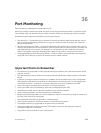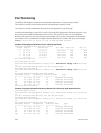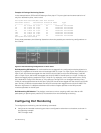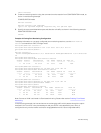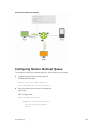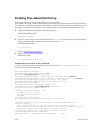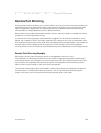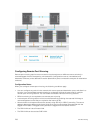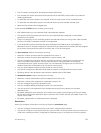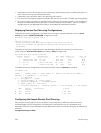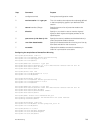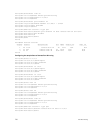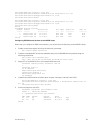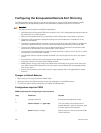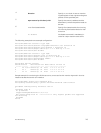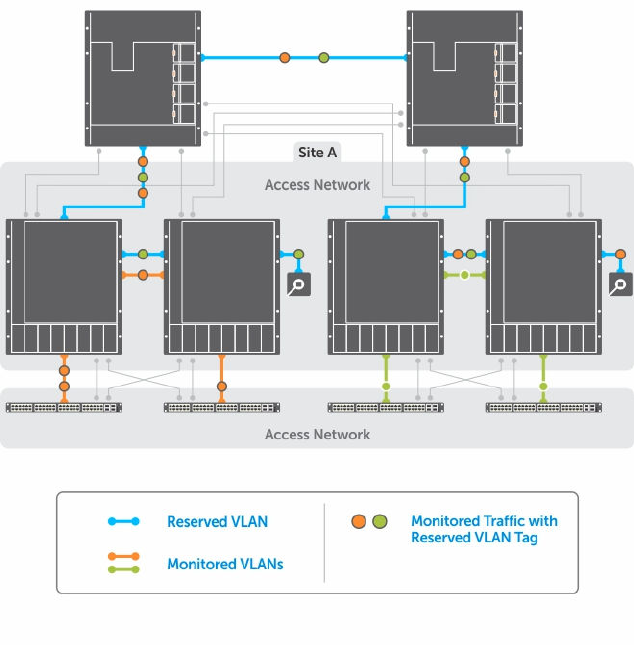
Configuring Remote Port Mirroring
Remote port mirroring requires a source session (monitored ports on different source switches), a
reserved tagged VLAN for transporting mirrored traffic (configured on source, intermediate, and
destination switches), and a destination session (destination ports connected to analyzers on destination
switches).
Configuration Notes
When you configure remote port mirroring, the following conditions apply:
• You can configure any switch in the network with source ports and destination ports, and allow it to
function in an intermediate transport session for a reserved VLAN at the same time for multiple
remote-port mirroring sessions. You can enable and disable individual mirroring sessions.
• BPDU monitoring is not required to use remote port mirroring.
• A remote port mirroring session mirrors monitored traffic by prefixing the reserved VLAN tag to
monitored packets so that they are copied to the reserve VLAN.
• Mirrored traffic is transported across the network using 802.1Q-in-802.1Q tunneling. The source
address, destination address and original VLAN ID of the mirrored packet are preserved with the
tagged VLAN header. Untagged source packets are tagged with the reserve VLAN ID.
• The RPM VLAN can’t be a Private VLAN.
• The RPM VLAN can be used as GVRP VLAN.
706
Port Monitoring




